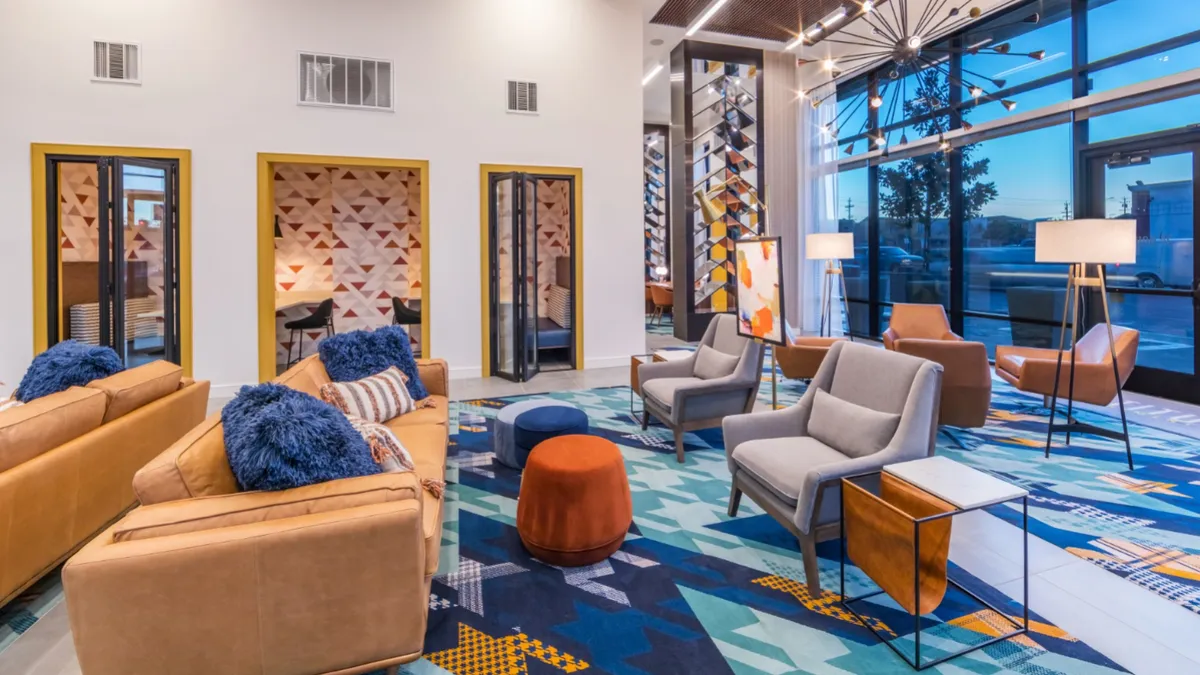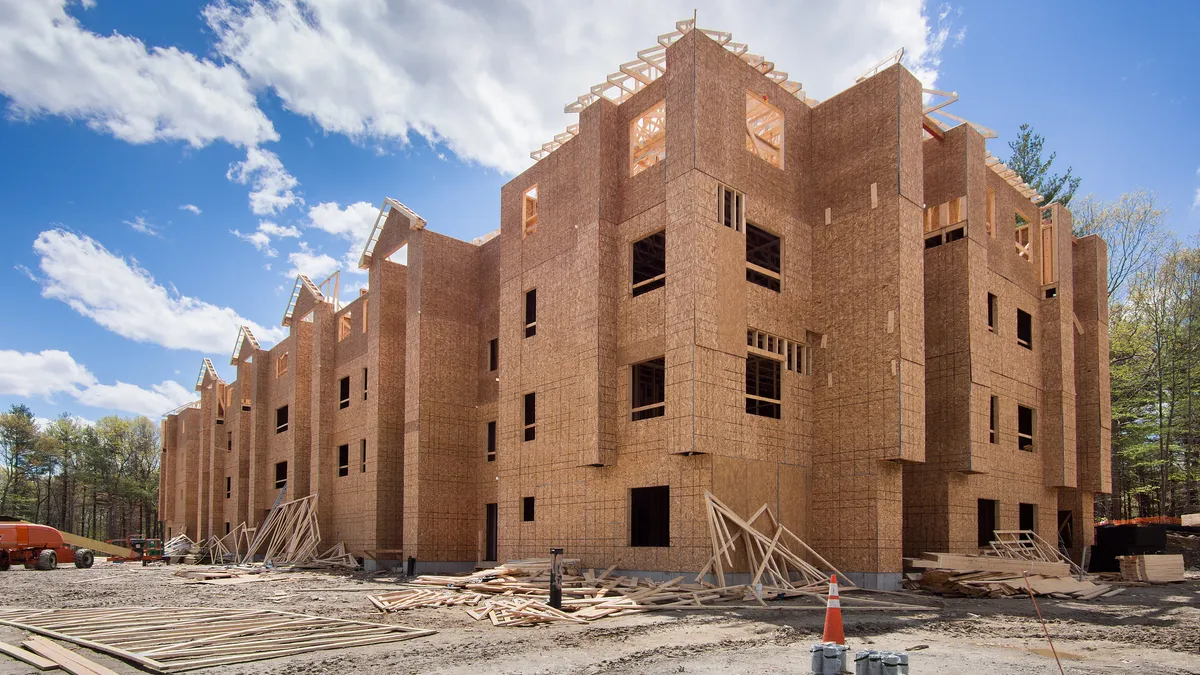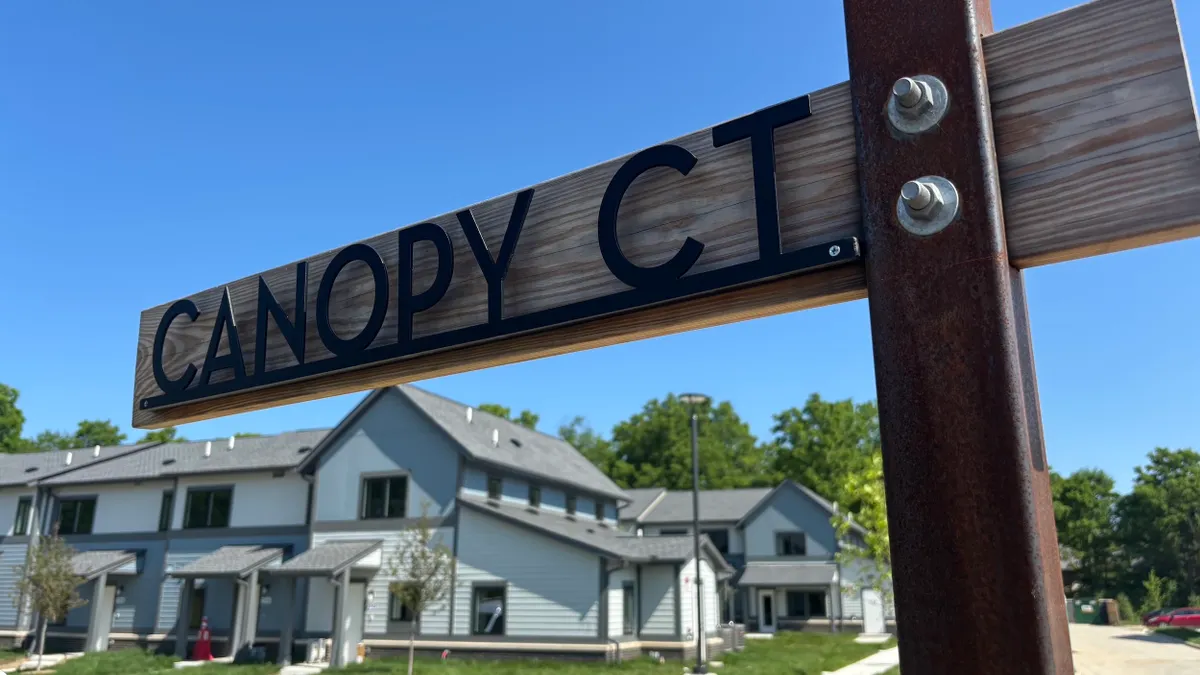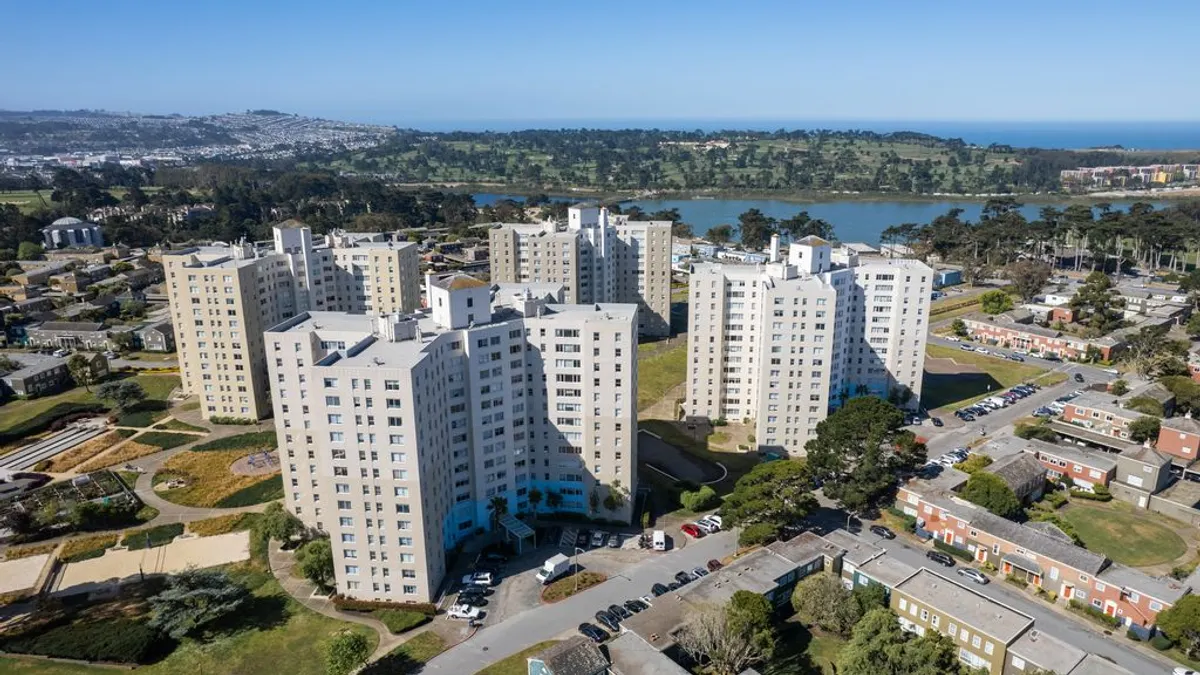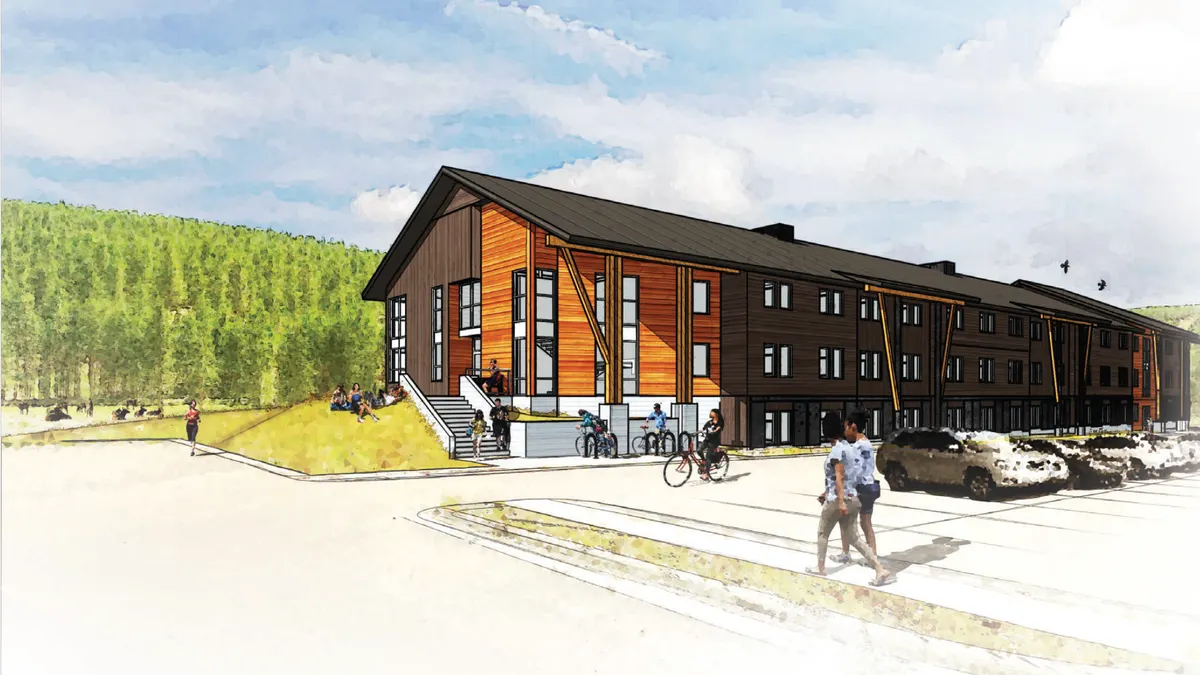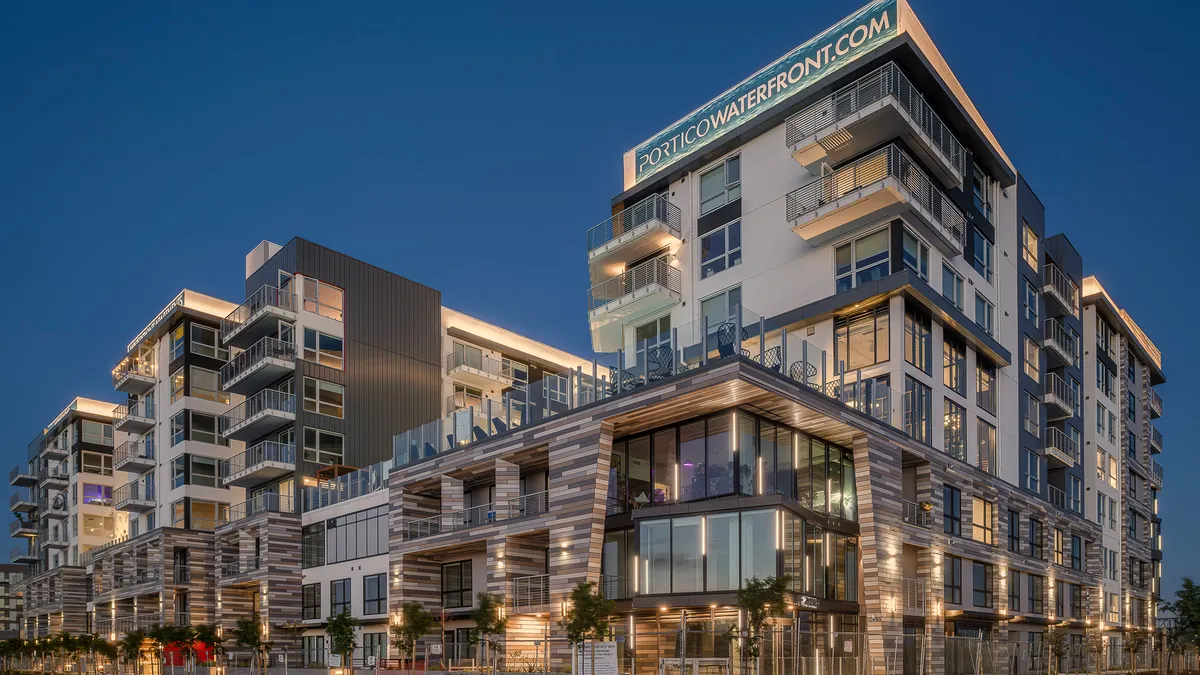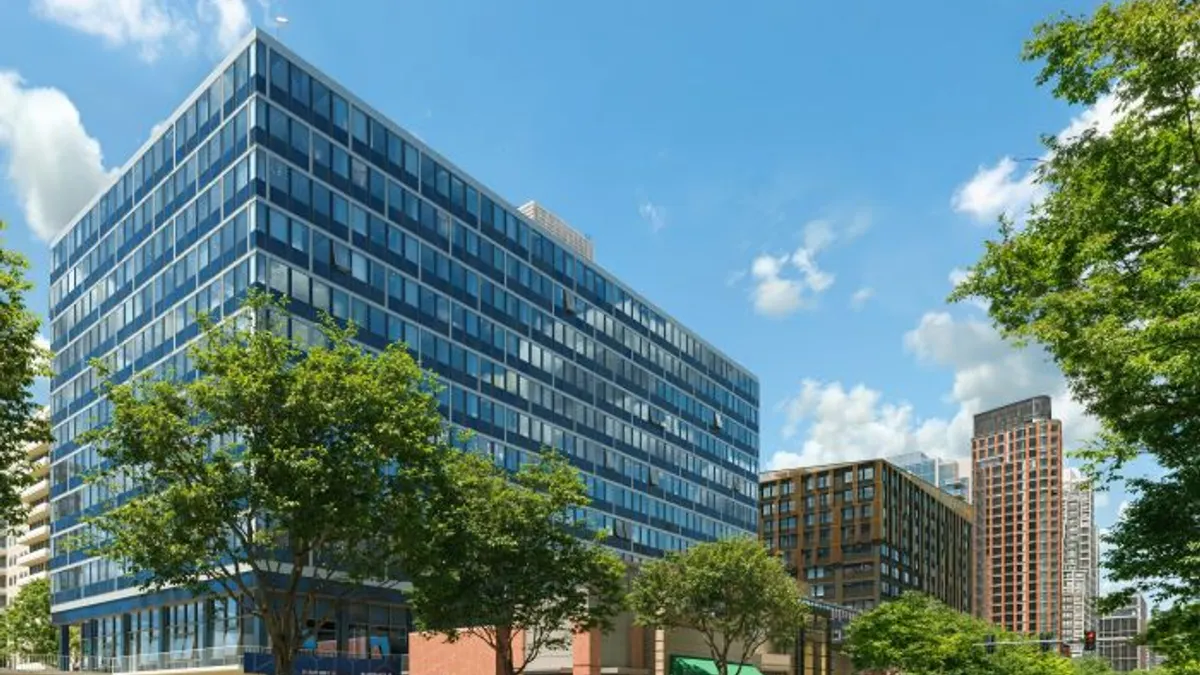As co-president of Dallas-based interior design and architecture firm Thiel & Thiel, Paige Byrd and her team have designed award-winning multifamily properties throughout the country, from Atlanta to Portland, Oregon.

Byrd, who has been with Thiel & Thiel since 2007, is no stranger to real estate booms and busts and has learned to expertly navigate multifamily design trends. The firm is known for incorporating architectural and regional influences to deliver unique designs with finishing touches such as reclaimed bowling alley wood and bike wheel art at ArLo Apartments in Portland, Oregon, and a custom cassette tape art installation at the Landing at Double Creek in Austin, Texas.
Here, Byrd talks with Multifamily Dive about meeting the demands of today’s ultra-discerning residents, who expect luxury amenities and five-star ambiance within authentic settings.
MULTIFAMILY DIVE: What’s the biggest trend you’re seeing in multifamily design?
PAIGE BYRD: The pandemic has made everyone so much more aware of physical and mental health. Even in the programming phase of new deals, we’re working health-focused design in there.
For example, in the past, a fairly good amount of square footage was allotted to the leasing office and the clubhouse. Now, leasing office square footage is shrinking so we can grow fitness areas. We’re finding opportunities to have amazing fitness — upgrading equipment; creating a CrossFit yard that’s an extension of the gym for a younger, more urban demographic; and carving out private, smaller workout areas for small groups and individuals.
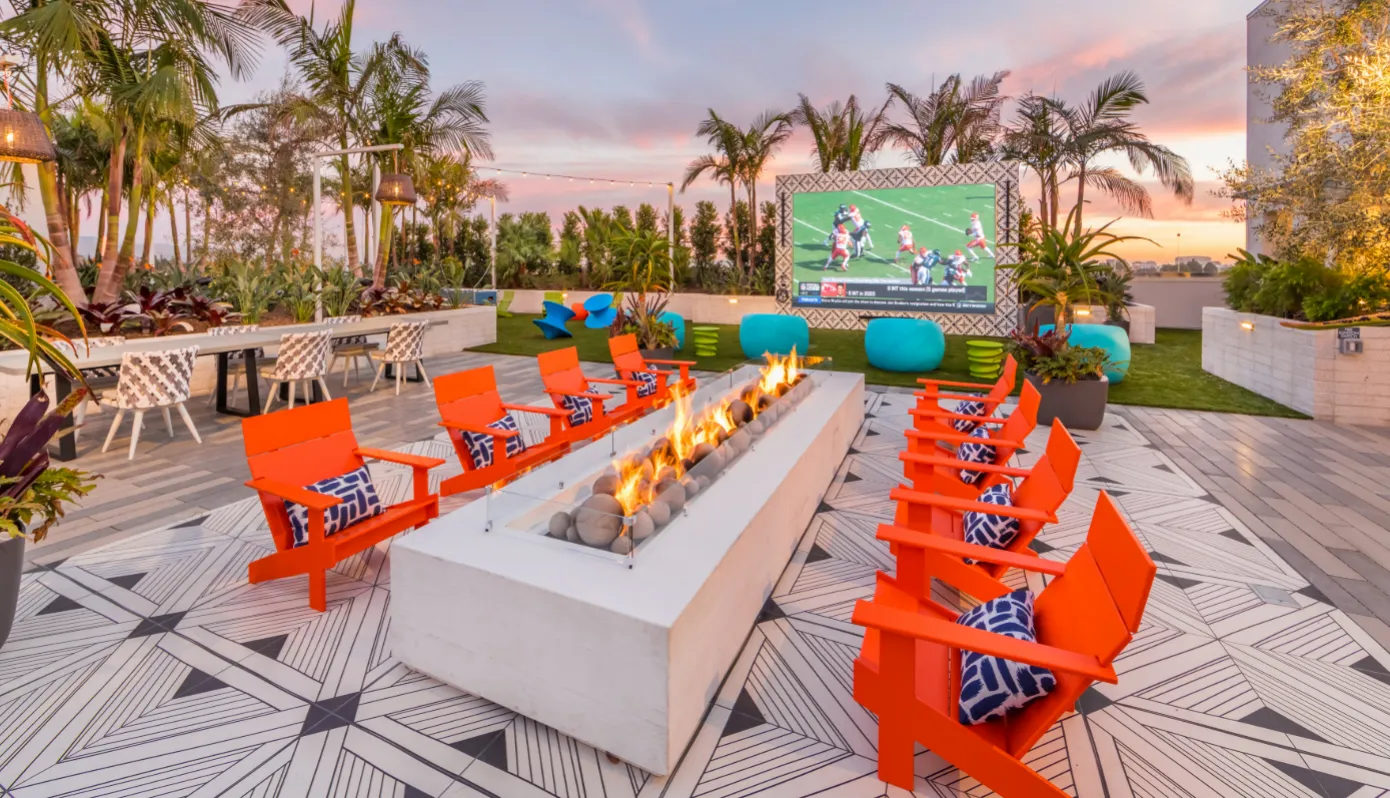
Whenever we have the opportunity, we’re also providing an exterior connection with a yoga lawn or Zen garden, a quieter place without loud music where people can do yoga, meditate and stretch.
How are pools changing?
It’s never just a rectangular pool anymore. It’s always resort-style with cabanas, soft seating, outdoor entertaining pavilions and diverse seating solutions. Everybody wants to mimic a four- or five-star hotel. People want to be there by day and have friends over to grill in a great outdoor kitchen at night. We’re creating that lifestyle experience for the multifamily resident that you would experience in a really nice luxury resort.
Why are leasing offices disappearing?
Back in the day, leasing offices had to have a whole room just for paper files that had to be kept for every resident for a certain amount of time. Now that all that’s paperless, leasing agents only need a couple of private offices in case residents want to have a conversation behind closed doors and a break room for employees.
The goal recently has been to minimize the leasing footprint and the transactional experience of sitting down across a desk from someone, so as soon as potential residents walk in, they’re experiencing the club space and the co-working spaces. At the end of the day, the manager can lock up the small leasing area, and the rest of the space is available to residents 24/7.
What about pets?
The pet thing is huge. We have some clients that are so dog friendly, they have cameras in the units that let residents see their dogs and give them a treat when they’re away. They’re providing dog walking and doggie day care on site. These days, if you don’t allow pets, good luck to you.
And bikes?
So many of our developers are trying to secure land close to bike trails. Biking has become so big over the past two years. Most places are offering bike storage and fix lounges, a place for the community to come together to repair their bikes. They often have TVs, and some even bring in beer taps. It’s another opportunity to create a cool hangout where people go to meet other people.
How has the pandemic changed co-working spaces?
Any time we tour a property that has a private, small conference room where one person can work, the operators tell us if they had 10 of those, they would be full every single day. They're really embracing the co-working environment with private and semi-private stations.
How have shifting demographics affected multifamily design in Texas?
Because we have so many people moving here from the West and East Coasts, the level of design and expectations have been elevated. If you go to a property designed in the late ‘90s or early 2000s, it will be very Texas, with the star and expected traditional Texas design elements. The DNA of Texas is amazing.
But now we’re looking at how we can respect that DNA while making it relevant so people moving to our great state find the environment more relatable.
How do you accomplish this?
The goal is to be void of trend, for longevity purposes. I get it, and I like it. Everyone is looking for timeless and classic while working with the region. Everyone wants to have their own identity now, making sure their property is different from the comp, so we’ll really lean in if there’s anything significant as far as culture, history or art. Authenticity is so important as we craft a property’s “story.”


